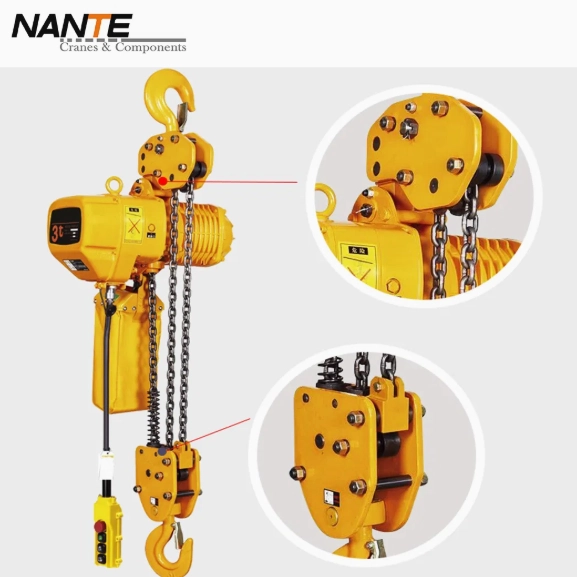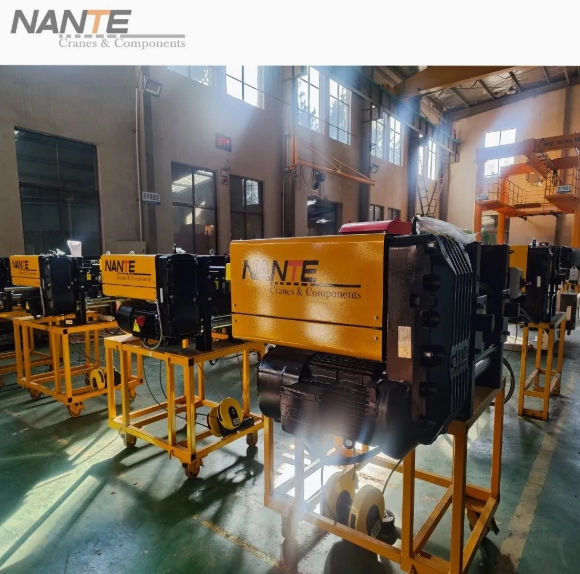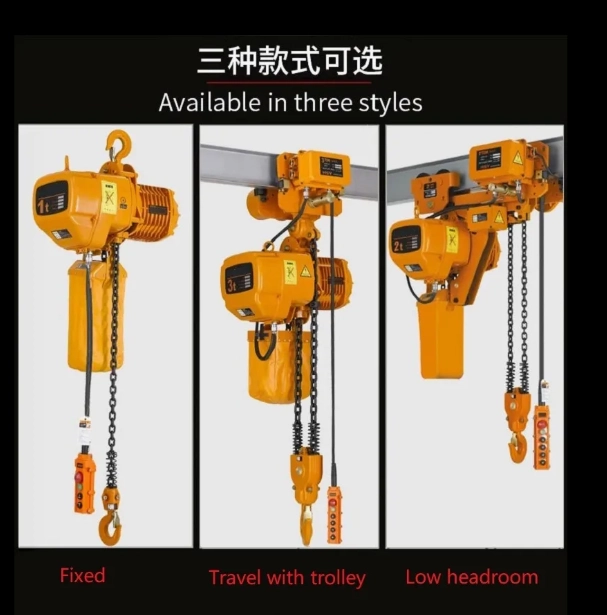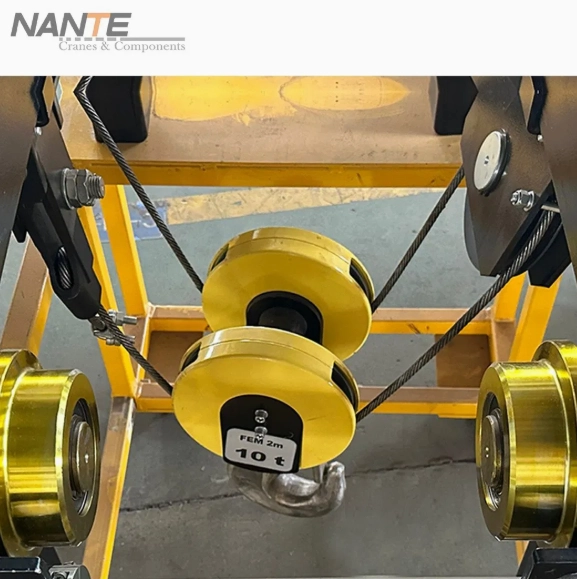Chain Hoist vs. Wire Rope Hoist: Which One Is Right for Your Factory?
Chain Hoist vs. Wire Rope Hoist: Which One Is Right for Your Factory?
Date: 2025-07-03 Share:
In today’s busy factory world, lifting heavy items safely and quickly is vital. It keeps work smooth and workers safe. Factories use hoists to move materials, machines, and parts easily. Two common hoists—chain hoists and wire rope hoists—are popular. But they have different uses. This article compares difference between chain and wire rope hoist. It helps factory managers and buyers pick the right one. We’ll explain how they work, their differences, uses, and tips for choosing. We’ll also show why Nante Crane is a reliable partner for lifting solutions.
Understanding Chain Hoists and Wire Rope Hoists
Chain Hoists
A chain hoist is a basic but strong tool for lifting. It uses a metal chain to raise loads. You pull a hand chain in manual models. Or, an electric or air-powered motor turns a wheel to move the chain. This lifts or lowers the load. Chain hoists are small and handy. They fit well in tight spaces. They can lift 0.5 to 10 tons. Some strong models lift up to 50 tons. These hoists work best in clean, indoor places like workshops or warehouses. They’re great for frequent, light lifts.
Wire Rope Hoists
A wire rope hoist uses a steel cable, called wire rope. The rope wraps around a drum to lift loads. An electric or air-powered motor spins the drum. This winds or unwinds the rope to raise or lower the load. These hoists are made for tough jobs. They lift 1 to over 250 tons. Wire rope hoists handle rough places like outdoor areas or factories with dust, water, or heat. They’re perfect for heavy, less frequent lifts in shipyards or big plants.
Key Differences at a Glance
To make choosing simple, here’s a quick look at chain hoists and wire rope hoists:
| Feature | Chain Hoist | Wire Rope Hoist |
| Capacity | Up to 50 tons (usually 0.5–10 tons) | 1 to 250+ tons |
| Duty Rating | H2–H4 (frequent, medium loads) | H3–H5 (heavy, constant or rare) |
| Environment | Indoor, clean places | Tough conditions (dust, water, heat) |
| Cost | Cheaper to buy and fix | More expensive to buy and fix |
| Precision | Good for basic lifting | Great for exact positioning |
| Maintenance | Simple, easy to care for | Complex, needs skilled workers |
| Size | Small, easy to move | Big, usually stays in place |
Applications and Use Cases
Small Workshop
In a small workshop, a chain hoist is ideal. It lifts tools or small machines weighing 1–2 tons. It’s cheap and easy to move. For example, lifting a small engine for repairs is fast and affordable with a chain hoist.
Steel Fabrication Plant
A wire rope hoist is best for a steel plant. It lifts heavy steel beams, like 10–20 tons, accurately. This helps place parts correctly during building. Its strength and toughness make it a dependable tool for hard jobs.
Warehouse
In a warehouse, a chain hoist is great. It moves pallets and goods in a clean, indoor space. It’s flexible and simple to use. This makes it perfect for frequent, light lifts. Workers can manage stock quickly without spending too much.
Shipyard
For a shipyard, a wire rope hoist is key. It lifts heavy ship parts in tough outdoor conditions, like salty air or bad weather. Its strength and high capacity ensure safe handling of big loads.
How to Choose the Right Hoist for Your Factory
Picking the right hoist means looking at your factory’s needs. Here are the main things to think about:
Assess Load Weight and Frequency
Consider how heavy your loads are. Also, think about how often you lift them. For frequent, light lifts (0.5–10 tons), like tools or parts, a chain hoist is great. For heavy, rare lifts (1–250 tons), like big machines, a wire rope hoist is better.
Consider Environmental Conditions
The place where the hoist works matters. Chain hoists are best for clean, indoor areas like workshops. They don’t handle extreme conditions well. Wire rope hoists, with strong ropes, work in tough places. These include heat, water, or chemicals. They’re ideal for outdoor or industrial areas.
Evaluate Space and Mobility Needs
Look at your factory’s space. Chain hoists are small and easy to move. They fit in tight spots or on cranes like jib cranes. Wire rope hoists are bigger. They’re often fixed in place. They suit large factories or overhead crane systems.
Set a Budget
Money matters. Chain hoists cost less to buy and fix. They’re good for small businesses. Wire rope hoists cost more at first. They also need more care. But their ability to lift heavy loads makes them worth it for big factories.
Determine Precision Requirements
If your work needs exact load placement, like lining up parts on a line, a wire rope hoist gives better control. For general lifting where exactness isn’t key, a chain hoist is fine.
Why Choose Nante Crane
For lifting solutions, Nante Crane is a trusted partner for factories worldwide. Here’s why:
Expertise
Nante Crane has years of know-how. They design and provide hoists for many industries, from small shops to big plants. Their team knows each factory’s unique needs. They offer smart advice.
Quality Assurance
All Nante Crane products meet global standards, like FEM, CMAA, and EN ISO. This ensures safety and dependability. Their hoists are built to last. You can trust them.
Comprehensive Service
Nante Crane offers full support. They help you pick the right hoist. They also handle setup and ongoing care. Their focus on customers keeps your work running well.
Customization
Need a special hoist? Nante Crane makes custom solutions. They include features like anti-sway tech, auto-running, and data loggers. These boost safety and speed.
Trust Factors
With a strong name, certified products, and great service, Nante Crane is dependable. Visit their website at Nante Crane to see their chain and wire rope hoists.
Frequently Asked Questions (FAQs)
Q1: Can a chain hoist handle outdoor conditions?
A1: Chain hoists work best indoors in clean places. For outdoor or tough conditions, like rain or dust, a wire rope hoist is better. It’s more durable.
Q2: How often should hoists be maintained?
A2: Regular care is important. Chain hoists need basic checks, like oiling the chain. Wire rope hoists need deeper checks of the rope, drum, and motor. Do this every six months, per industry rules.
Q3: Are wire rope hoists more expensive than chain hoists?
A3: Yes, wire rope hoists cost more to buy and fix. But they’re worth it for heavy jobs because of their strength and capacity.
Q4: Can I use a chain hoist for heavy-duty applications?
A4: Chain hoists are good for light loads, up to 10 tons. Some models reach 50 tons. For very heavy or frequent lifts, wire rope hoists are built for the job.
Conclusion
Choosing between a chain hoist and a wire rope hoist depends on your factory’s needs. If you want a cheap, movable option for frequent, light lifts in a clean space, a chain hoist is best. For heavy, rare lifts in tough conditions, a wire rope hoist has the strength you need. Think about load weight, environment, space, budget, and precision. This will help you decide. Nante Crane offers top-quality hoists, expert advice, and custom solutions. They ensure your work is safe and fast. Visit Nante Crane to find the perfect hoist for your factory today!







